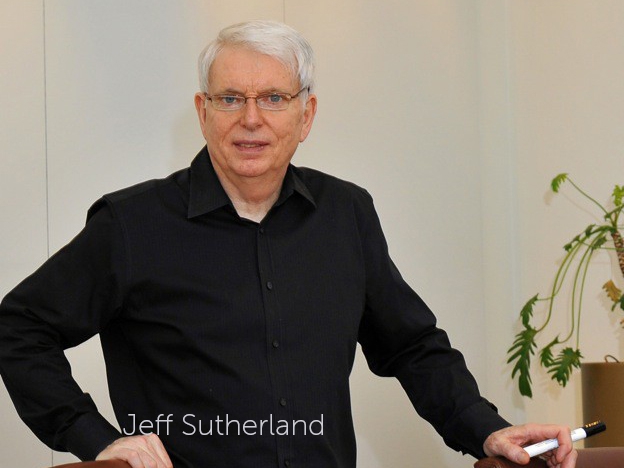
How Rugby Inspired One of the World's Great Management Gurus
Many workspaces are now being designed to suit the concept of scrum working - a streamlined, efficient and highly agile working style.
Work shouldn’t be a mindless race, but nor should it turn into a slow and drawn-out marathon. In fact, according to the concept of Scrum Working first developed by software developer Jeff Sutherland in the 1990s, the most efficient way of working is with a series of clearly defined “Sprints”. So let’s dive into his concept of “Scrum Working”.

What Inspired the Scrum?
In the early days of the internet boom, Sutherland grew frustrated that many of the projects he was asked to work on ran continuously behind schedule and over budget – if this sounds like a familiar feeling for you, you’ll definitely want to look into scrum working.
Realising there had to be a better way to work, Sutherland looked to the East: Japanese companies like Toyota, Honda and Fuji were at the height of their powers in those days and the country’s economy was absolutely booming. He soon found, published in the Harvard Business Review in 1986, a study by Japanese academics Hirotaka Takeuchi and Ihujiro Nonaka that compared the country’s high-performance working practices to a rugby scrum formation.

Many great ideas – ideas to do with teamwork, leadership, competitiveness and winning – have entered the modern workplace from the world of competitive sports, and Scrum Working is one of the best yet. So, by further developing Takeuchi and Nonaka’s ideas, and also by studying rugby (which is massively popular in Japan), Sutherland was able to develop his own concept of Scrum Working and grow into one of the most influential management gurus of the last couple decades.

How To Form a Scrum
The key components of his Scrum are the …
Product Owner: who decides what the final product will be.
Product Backlog: a list of everything that needs to be done. Anybody on the Team can add to this list, but only the Product Owner can sort them in order of priority.
Scrum Master: who manages each Sprint and makes sure that everybody keeps to the rules.
Team: everybody that will work on each Sprint together.
Sprint: the Product Backlog will be broken into a series of goals, each to be completed in a working Sprint of usually between 2 and 4 weeks. Crucially, the goal and the duration of the Sprint cannot be changed once it’s underway.
Tasks are chosen for each Sprint, and the Team strives to finish as many as they can within the given timeframe. During that time, they meet everyday at the same time, for a maximum of 15 minutes, and answer only 3 questions each:
- What did you do yesterday?
- What will you do today?
- Is there anything in your way that you need help with?
By the end of the Sprint the Team should have achieved its goal. This will be followed by a retrospective meeting about what they achieved, and how the process can be further improved – and then onto the next Sprint! This process repeats and repeats until enough of the product backlog has been cleared, the budget is finished, or the deadline is met.

How Scrum Working Helps You Succeed
The greatest benefit of the Scrum is how it guarantees that the most important jobs will have been completed by the time a project ends. It’s a streamlined, efficient and highly agile way of working; while it has a clear leadership structure, it also allows teams to achieve their goals with as little interference and as few time-wasting meetings as possible. As such, it contributes to much higher levels of job satisfaction and a real sense of camaraderie – just like all the best teams have.





Pour construire un espace qui favorise et démontre sa créativité, Adobe a travaillé avec Gensler pour créer leur nouvea…
TECHNOLOGIE & INFORMATIQUE

Les experts en communications sur le Cloud créent un intérieur pour le travail en groupe, une approche accélérée du dév…
TECHNOLOGIE & INFORMATIQUE

Le fameux siège social du plus grand réseau mondial indépendant d'agence de création à Soho, Londres, est bâti sur le p…
TECHNOLOGIE & INFORMATIQUE